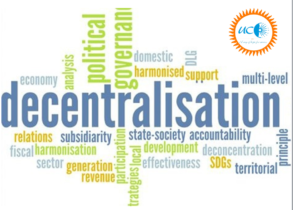Discuss the significance of Lok Adalat as an effective dispute resolution mechanism? (150 words)
Approach:
- Give a brief introduction about Lok Adalats.
- Discuss the organization and power structure of Lok Adalats.
- Highlight the benefits of Lok Adalat’s as an effective tool to resolve disputes.
- Conclude accordingly.
Introduction:
The term ‘Lok Adalat’ means ‘People’s Court’ and is based on Gandhian principles and as per the Supreme Court, it is an old form of adjudicating system prevalent in ancient India and its validity has not been taken away even in the modern days too.
Further, it is one of the components of the Alternative Dispute Resolution (ADR) system and delivers informal, cheap and expeditious justice to the common people.
In view of its growing popularity over time, it was given statutory status under the Legal Services Authorities Act, 1987. The Act makes the provisions relating to the organization and functioning of the Lok Adalats.
With the total number of pending cases in Supreme Court of India are 71,411, Lok Adalat would help in decluttering and removing the pressure from judicial system.
Body:
Organization of Lok Adalat:
The State/District Legal Services Authority or the Supreme Court/High Court/Taluk Legal Services Committee may organize Lok Adalats at such intervals and places and for exercising such jurisdiction and for such areas as it thinks fit.
Every Lok Adalat organized for an area shall consist of such number of serving or retired judicial officers and other persons of the area as may be specified by the agency organizing.
Generally, a Lok Adalat consists of a judicial officer as the chairman and a lawyer (advocate) and a social worker as members.
National Legal Services Authority (NALSA) along with other Legal Services Institutions conducts Lok Adalats.
Benefits of Lok Adalat’s:
- Affordable: There is no court fee and if court fee is already paid the amount will be refunded if the dispute is settled at Lok Adalat.
- Flexible Procedure: There is procedural flexibility and speedy trial of the disputes. There is no strict application of procedural laws while assessing the claim by Lok Adalat. The parties to the dispute can directly interact with the judge through their counsel which is not possible in regular courts of law.
- Final and Binding Reward: The award by the Lok Adalat is binding on the parties and it has the status of a decree of a civil court, and it is non-appealable, which does not cause the delay in the settlement of disputes finally.
- Maintenance of Cordial Relationship: The main thrust of Lok Adalats is on compromise between parties. While conducting the proceedings, a Lok Adalat acts as a conciliator and not as an arbitrator. Its role is to persuade the parties to reach a solution and help in reconciling their contesting differences.
- This encourages consensual arrangements. Therefore, disputes are not only settled but also the cordial relations between parties can be retained. Hence, it is a very healthy way of dispute resolution.
Conclusion:
Lok Adalats can be functional at larger levels if people are willing and aware of its advantages. Further, more provisions and innovative utilization is needed that could empower permanent Lok Adalats and are made supplementary form of litigation for people who cannot or should not resort to courts.






